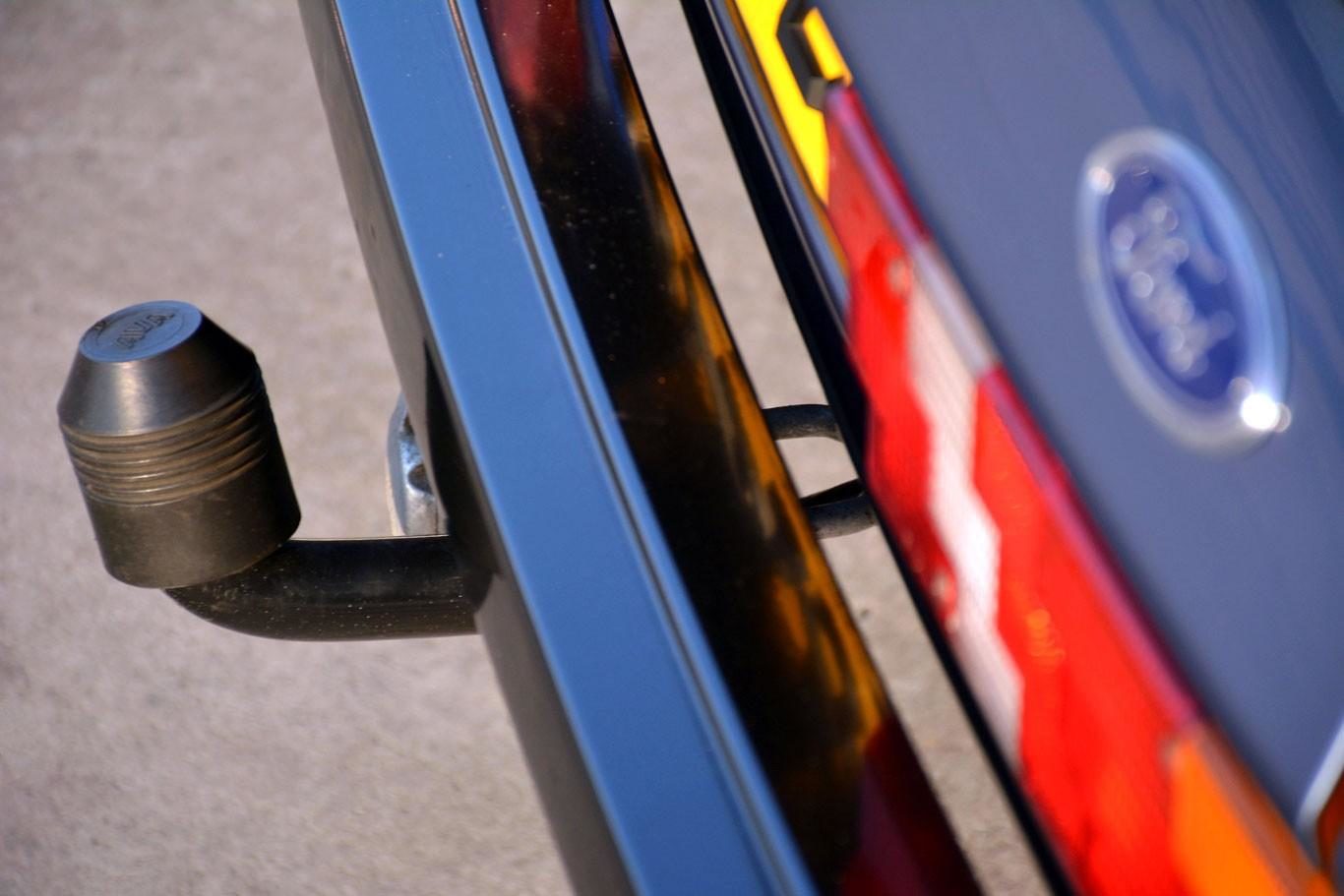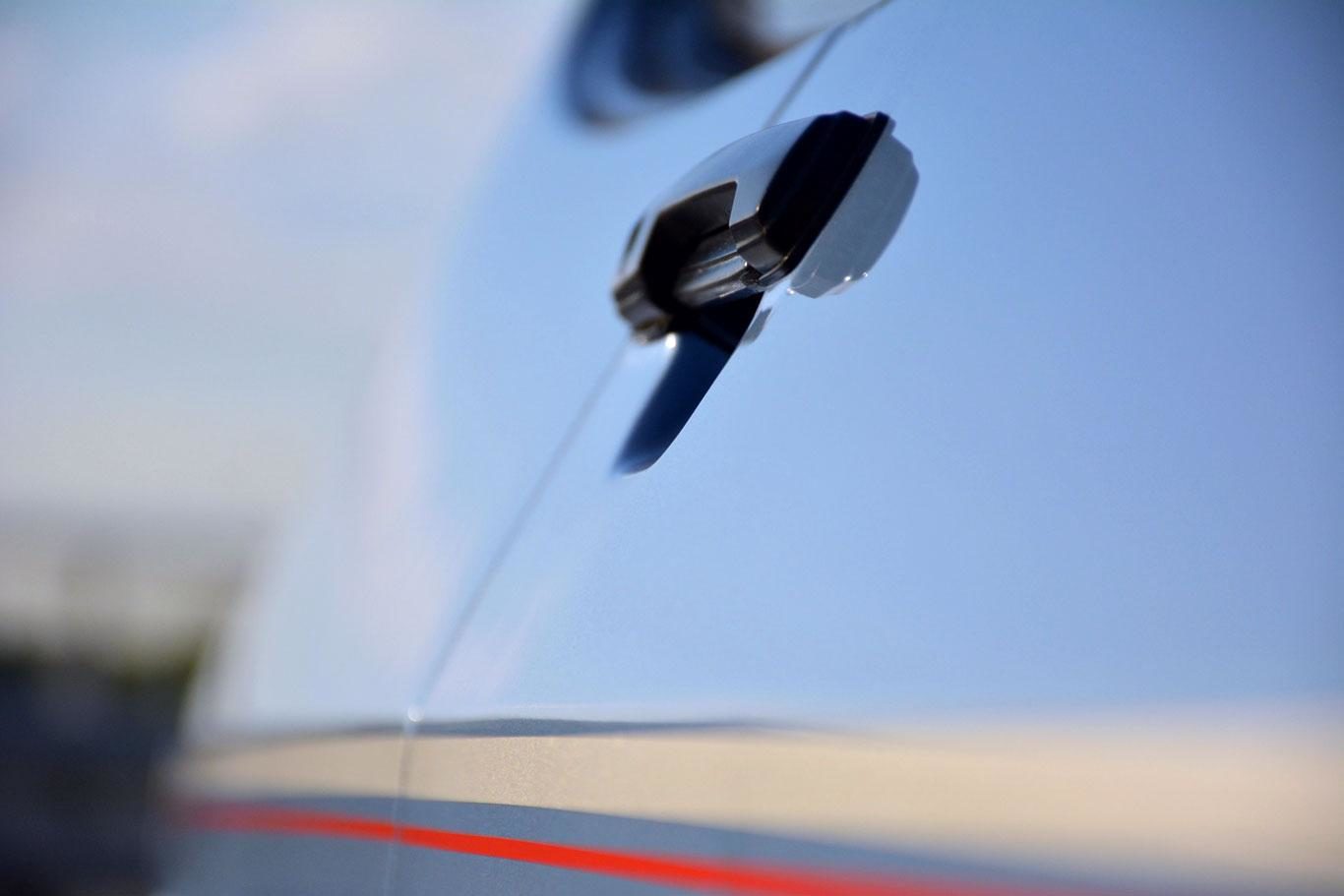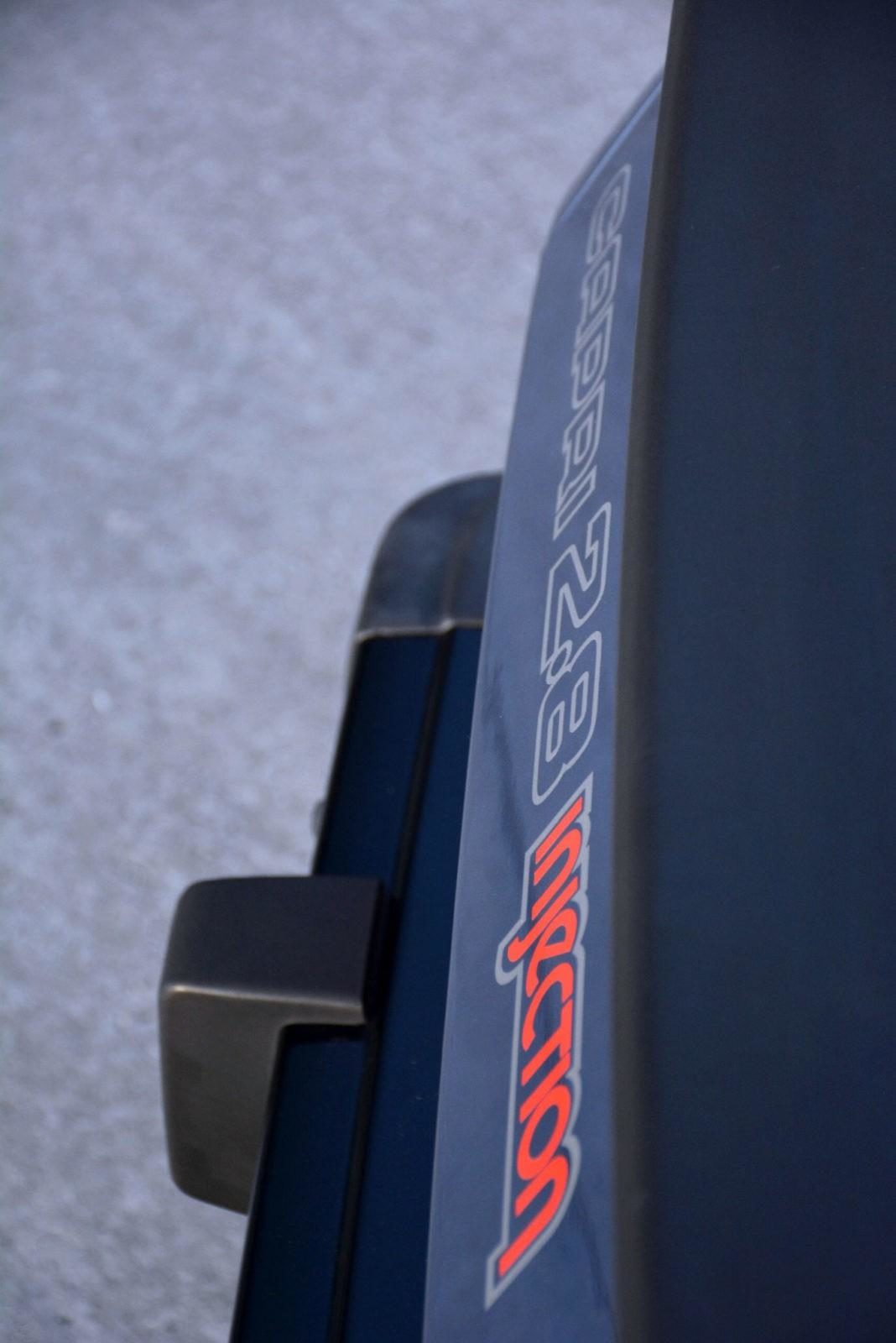Father's resistance (you)
Text & photography: Aart van der Haagen
Where have the times gone when you as a man of the house could make a statement in the street? As long as you did not commit an excessive attack on the collective wallet and you guaranteed a decent backseat for your offspring, you had the blessing of mother-the-woman. Nearly 1,9 million Capri's sold prove that Ford hit the right chord with guys.
This article is from the December issue of 2016 and can still be ordered while supplies last. Click for this link.
Today we immerse ourselves in the world of the Ford Capri, nothing more or less than the European counterpart of the Mustang and, based on its success, also born as a new dairy cow. Liberated from the war and flourishing economically, Europe displayed a pervasive euphoria and thought no one in limitations, but in opportunities. Ford dared to offer consumers a blistering alternative to the brave civilian sedans. For a Ford Capri you tapped only ten, fifteen percent more than for a technically more or less comparable Taunus and the practical features were just enough to save the man from heavy kitchen table conversations. The brand with the blue oval did very clever politics by offering the coupe launched in 1969 as bare as a louse and under-motorized, with a range of upgrading options on all fronts. Even without seeing them you can imagine the difference between a poor 1300 Custom and an RS2600. Funny fact: the Ford Capri would actually appear as 'Colt' on the scene, but the rights of that name already appeared to be with Mitsubishi. Were the Japanese once before. Ford ran into another obstacle in the introduction period, because the planned, very appropriate press release on the island of Capri fell into the water because a heavy storm prevented the boat crossing of the cars. The organization quickly moved to the Italian mainland.
Luxury problem

Turbo
With the advancement of the 1970s, the sustainability of the Capri concept began to show cracks and Ford was forced to dig deep into the pouch for a major freshening up. It pumped ten million DMark into the development of a more aggressive-looking model with a new dashboard and greatly improved aerodynamics and handling. Recaro was allowed to supply the furniture in the sporty-tinted S versions. Once again the engine range was overhauled, resulting in an 1600 Pinto and two, 6 and three liter V2,3s. The lightest and the heaviest six-seater blew the retreat in 1980, followed by an 2.0 Pinto and an 2.8 Injection. Ford released a turbo in a limited edition on the Ford Capri and Aston Martin showed the same trick with the Tickford, but the days of the versatile coupe were counted sweetly. He was particularly troubled by more efficient, often faster, hot hatches such as the Volkswagen Golf GTI and, more importantly, Ford's own Escort XR3 (i) plus the Sierra XR4i, which shamelessly cannibalized their old brother. In 1984 production in continental Europe came to an end, two years later the English also saw no bread in it.
Too stingy

That the diversion of this classic coupé certainly did not leave the enthusiasts untouched, is evident from the fact that the Ford Capri Club Netherlands was already founded in 1984. Anno 2016 is still fully active, with a richly filled calendar and even a growing number of members, that exceeds the 200. Chairman Hans Verbael provides the ultimate PR by not offering the least Ford Capri for this article: his own 2.8 Injection from 1983, known to connoisseurs as Super Sport and under that flag equipped with a five-speed gearbox and a limited slip differential. The originally Dutch license plate reinforces the special feature, because cheese heads are generally too stingy to smash their piggy bank on a top model. Most of the injections here in the Netherlands come from Germany, where Ford employees bought them in large numbers, tempted by a favorable financing arrangement. Those cars often protrude from the bells and whistles, such as a sliding roof, a semi-leather interior (Super Injection) and a five-speed gearbox with extra long transmissions, to be able to yell along nicely over the Autobahnen and to make BMW-men grumpy.
Mother's children

No matter how old, the Ford Capri still inspires awe, like a wrinkled boxer at rest. The rubber patch on the hatch door, the flank-cutting striping, the contrasting gray areas under the sill line and the twelve-hole aluminum wheels set in 205 / 60 R13 tires set the tone. However, it is basically correct: the flamboyant fastback line and the nose that connects Cologne to Aachen naturally characterize the Ford Capri as a genuine man's car, which in the eighties and nineties exerted a magnet effect on mothers' children who lived their true me with a rough lifestyle and ditto appearance disguised. The guys who imitated Kiss and Whitesnake in front of the mirror with the air guitar. They hung their status on a Ford Capri, leaning at an angle of 45 degrees in the lush plush of the tough Recaro. No leather? Oh no, what counted were that logo and the raised cheeks. Incidentally, such an armchair is very comfortable. Among the other testosterone-inducing things on board we count the three-spoke sports steering wheel and a six-piece set of instruments that provide you with a comfortable sense of technical control, even though moeke gave you two left hands despite all her care. In practice, Caprists were known as handy birds, who did not hesitate to let Acaciastraat 5a tuning go on their pride.
Napoleon

In fact you can already read it: the Ford Capri is a coupe of the old stamp and that is how it behaves along the way, which does not lead to wonder if you examine the concept. Well, the engineers spent a part of their budget to buy complete front struts and rear dampers at Bilstein, but the rigid driven axle with leaf springs - in the case of the Injection only carried out - and drum brakes were not technical in Napoleon's time more delights, so to speak. The twelve-valve Cologne V6 with central camshaft, however, squeezes out a handsome 160 hp, fed by six injectors with Bosch K-Jetronic control. How does that feel in an 1190 kg light coupé? Slightly spectacular, which you could already see from a sprint value of 0-100 km / h in 8,2 seconds and a top of 210 km / h. Immediately after starting, the Ford Capri will whip you up by turning restless, say, restlessly idle, urging you to kick the cowboy pedal ugly with your cowboy boot. A 'hot' camshaft, right in front of us, that becomes clear.
Ice Bucket Challenge
With cold oil, however, we keep a low profile and are amazed by the tranquility that the cabin surpasses. The V6 operates quietly behind the scenes, supported by a transmission with such long transmissions that you wonder if Ford has secretly developed it for the Granada of Beatrix. We can already play a bit on winding roads, which gives us time to get used to the rather enthusiastic power steering and the somewhat hakery, not overly precise shifting five-speed gearbox. With dry asphalt beneath the soles, the car will let crazy capri ... nals be happy, but don't try it out first on a wet foliage between trees, because it will hit its tail fairly unexpectedly and for many, uncontrollably, and seriously injure itself. Truly a classic rear-wheel drive, a belhamel with un-German-mean areas, who elicit a big grin from the purist. Now we can respond to the begging of the injected V6, which wants nothing more than to be hunted. As if you are submitting a snarling grizzly bear to the Ice Bucket Challenge without being asked, the block suddenly wakes up with a shout that totally disrupts nature and the Ford Capri flares towards the horizon, with a strong progressive sounding speed. We continue until just after we reach his power peak, which is at 5700 rpm, with which the once so good lobes are showing their most brutal side. This is beautiful, this gives us goosebumps! Suddenly the Ford trick begins to dawn on us. The left half of the rev counter was designed for the family strips, the right half for when Dad needed his push, with three empty spots around him. What a brilliant concept. The Ford Capri; You can come home with that.
Technical Specifications
- Liquid-cooled V6 engine, central camshaft, 12 valves
- Engine capacity 2792 cm3
- Bosch K-Jetronic fuel supply
- Power 160 hp at 5700 rpm
- Transmission manual gearbox
- Drive rear wheels
- Wheel suspension in front of McPherson, coil springs, stabilizer
- Wheel suspension behind rigid axle, leaf springs, stabilizer
- Brakes before ventilated discs
- Brakes behind drums
- L xw xh 438 x 170 x 132 cm
- Weight kg 1190
- Top speed 210 km / h
- Consumption 11,1 1 / 100 km
Do you want to view the photos full screen? Then click on one of the photos in the gallery below.






















